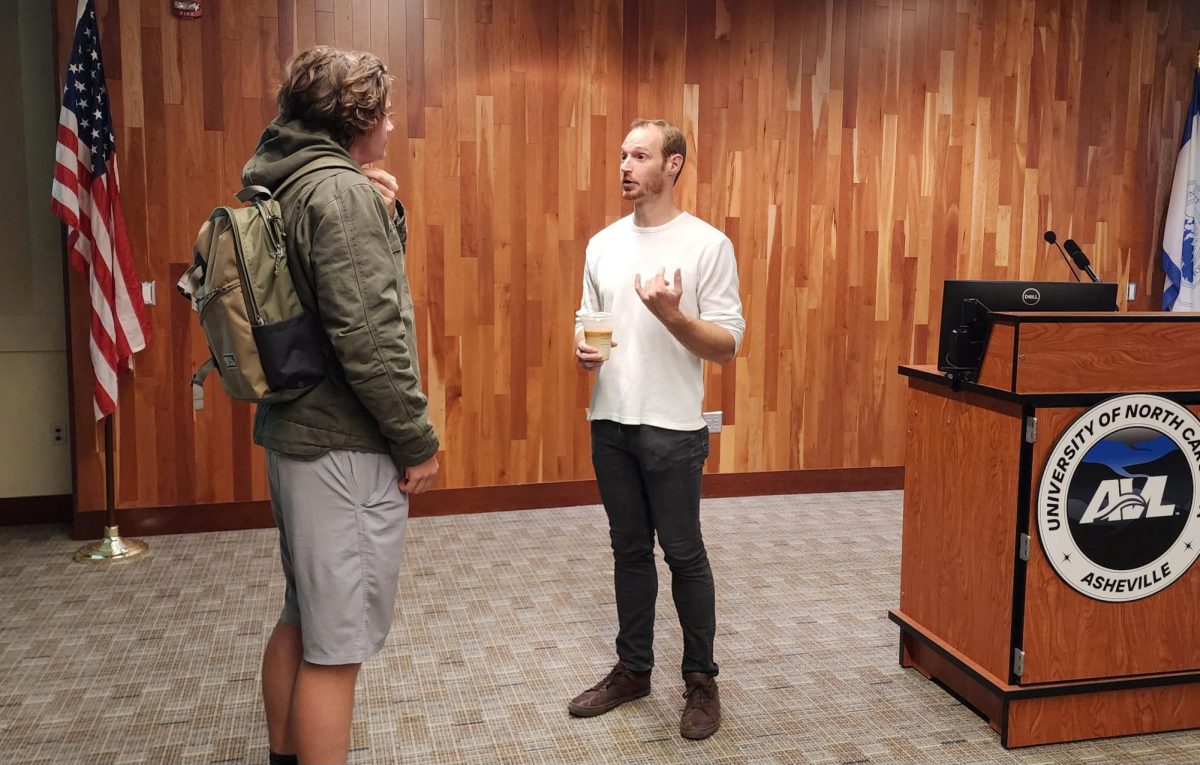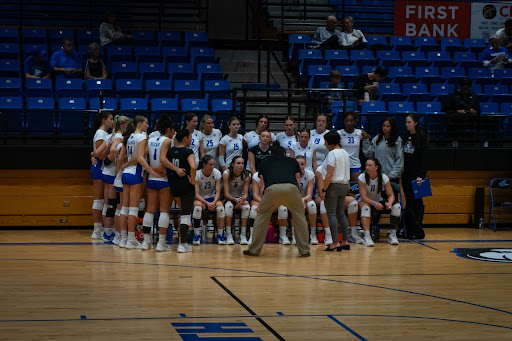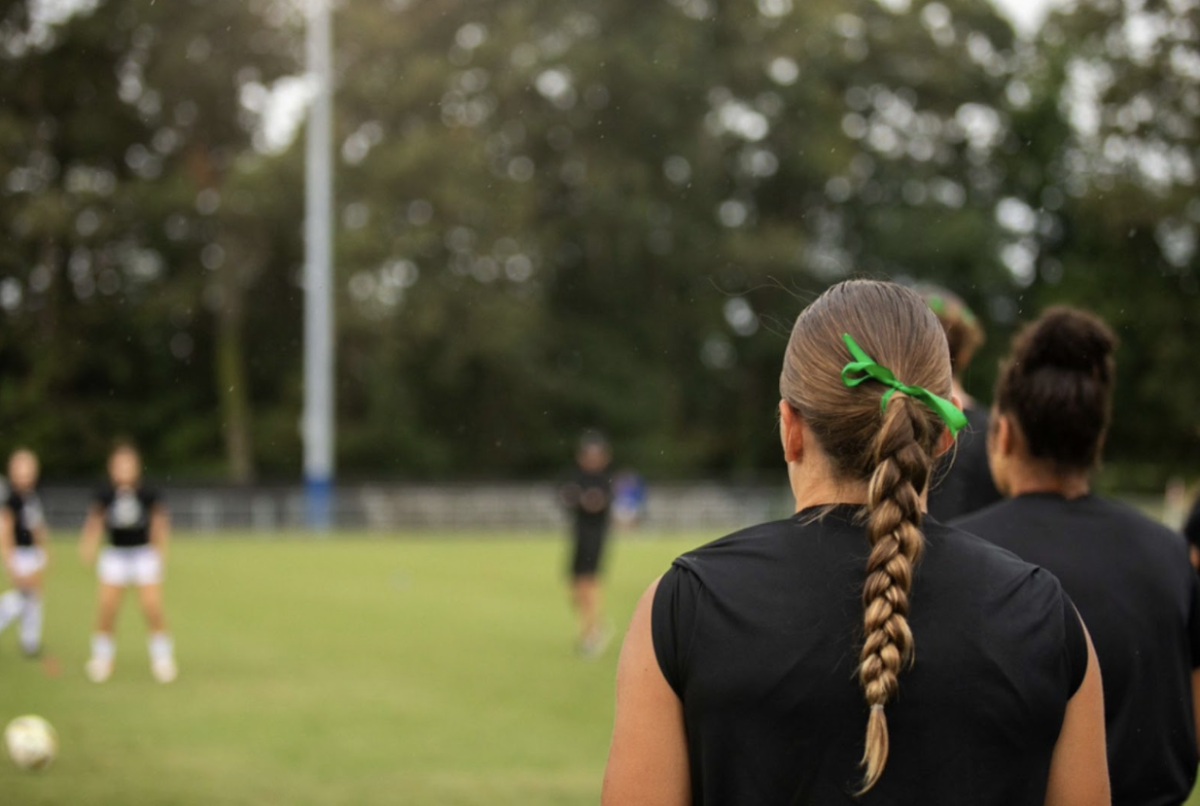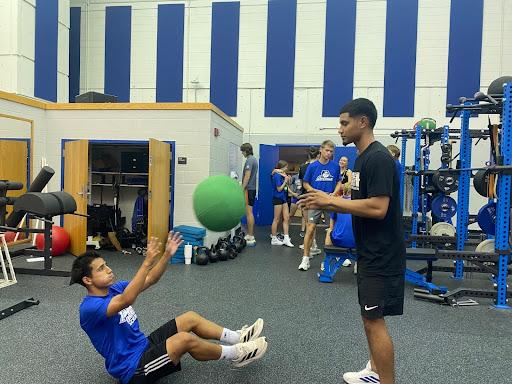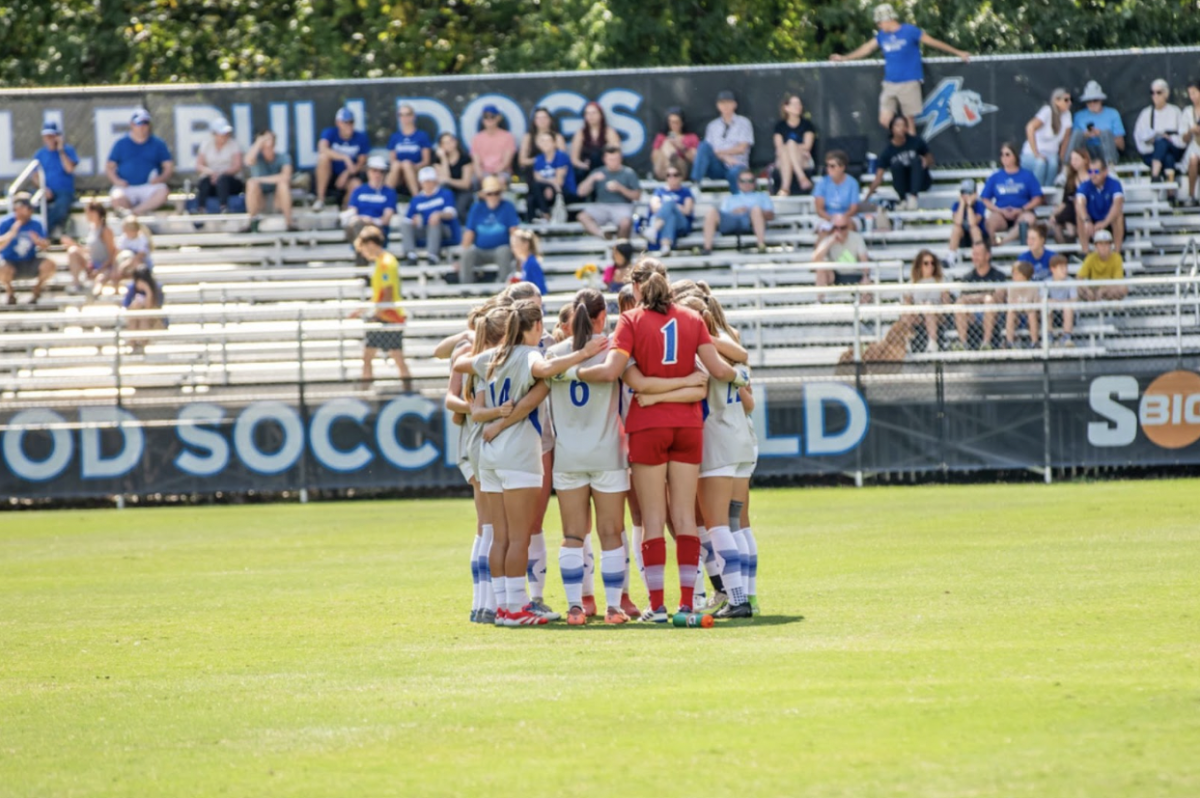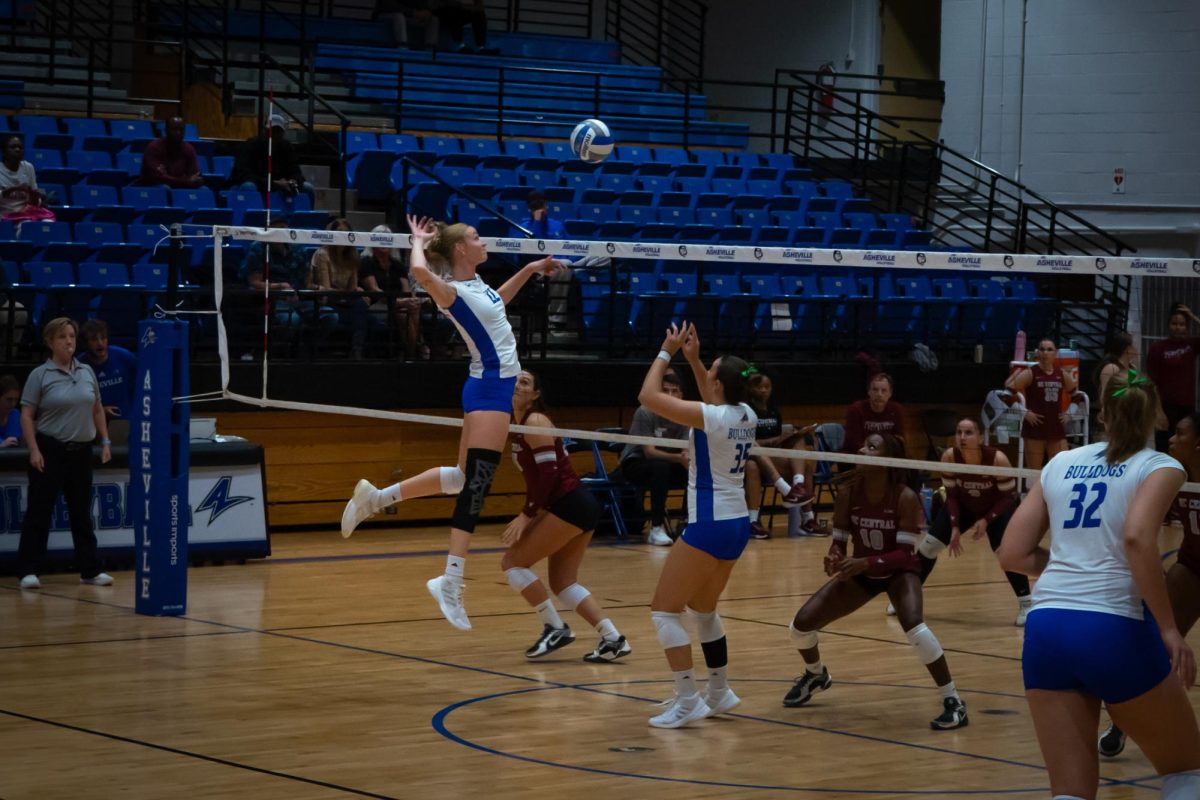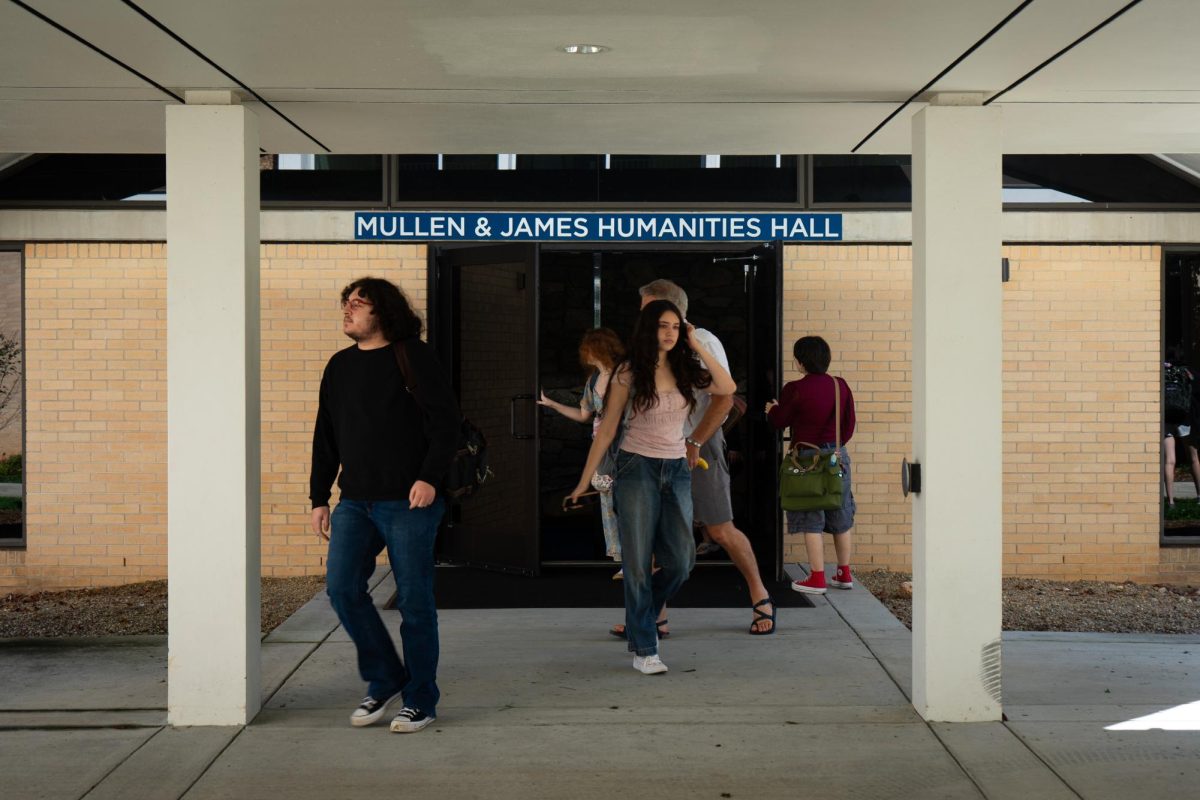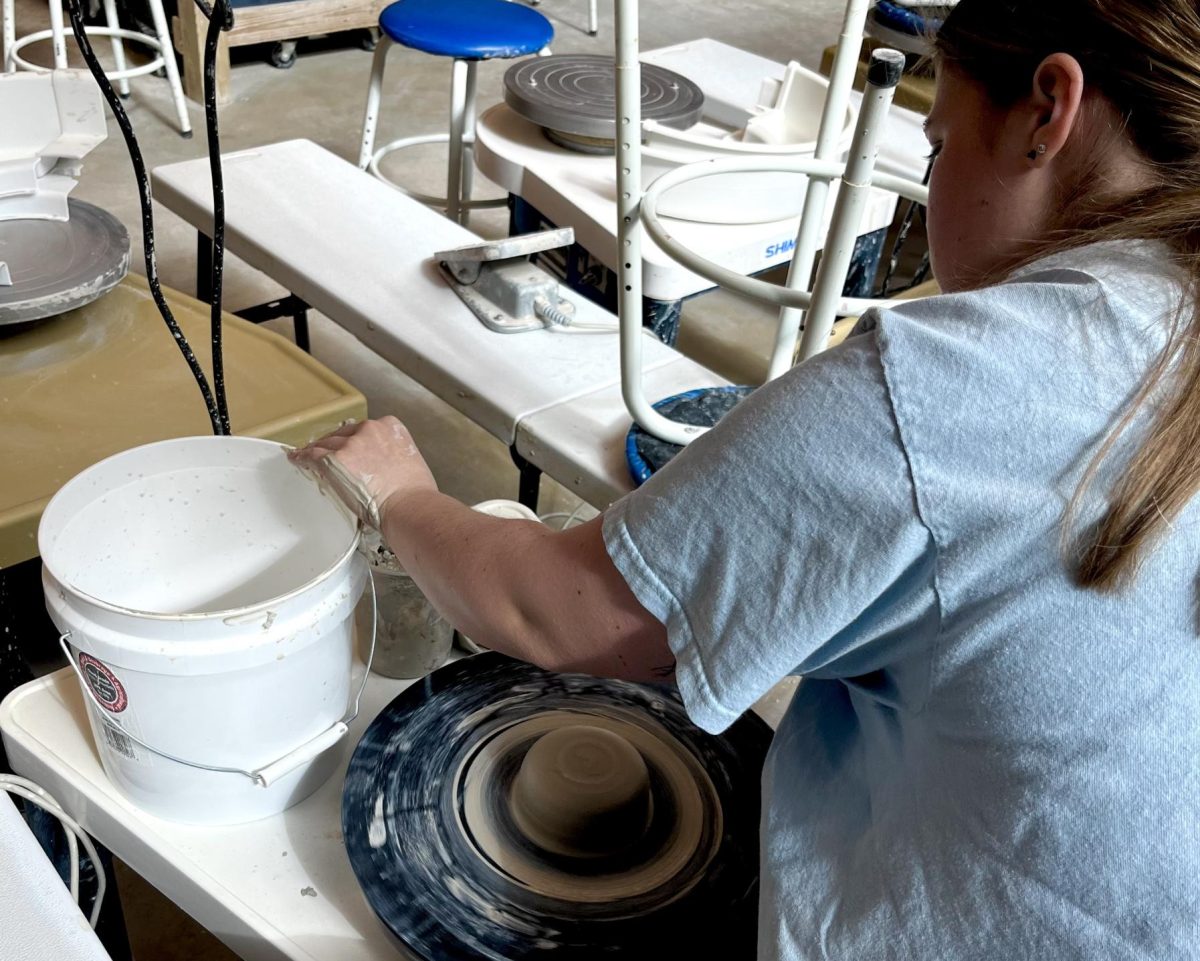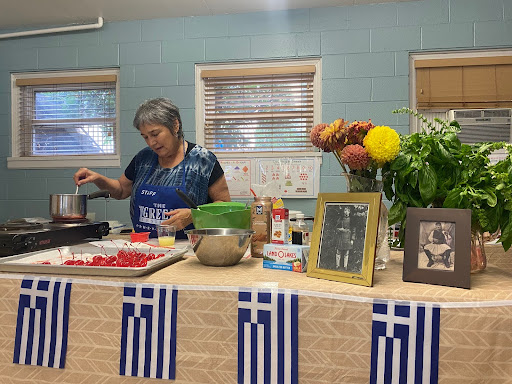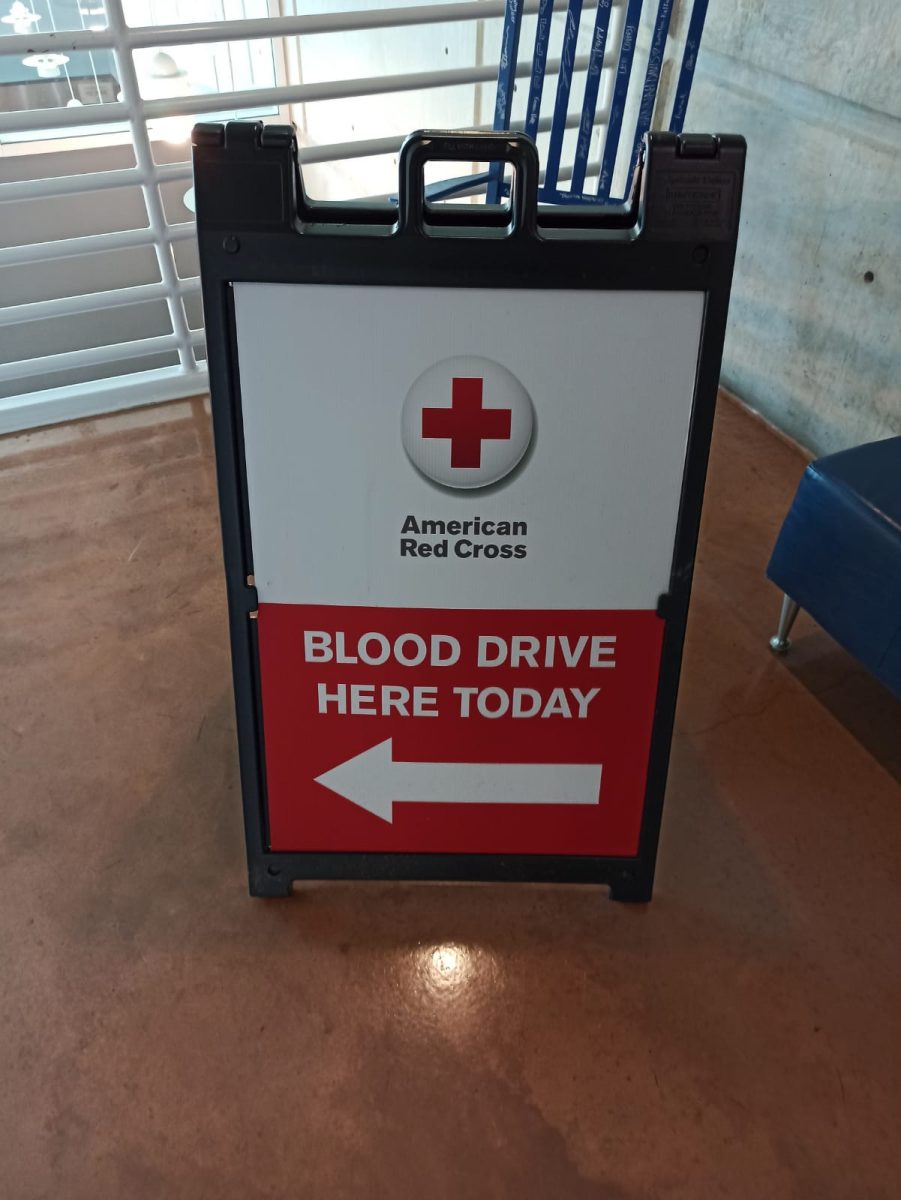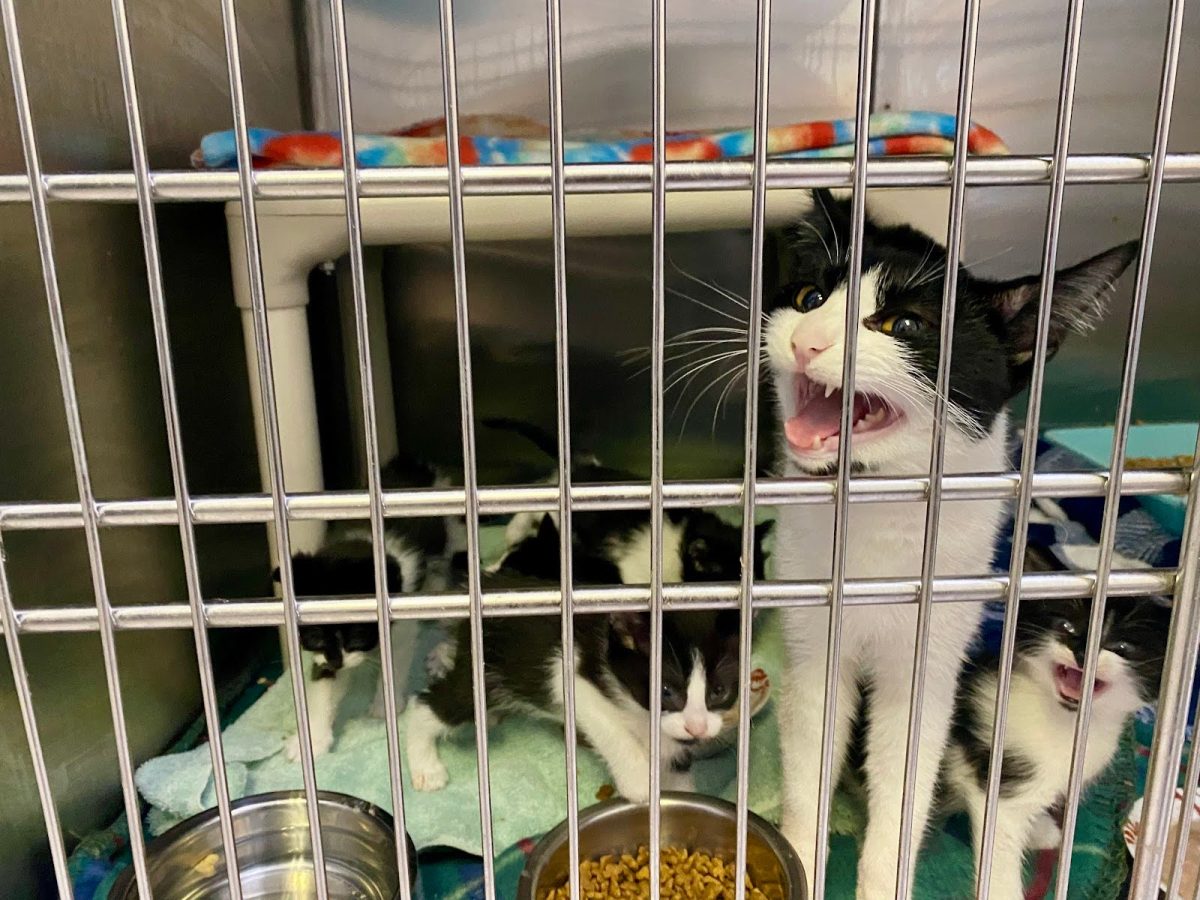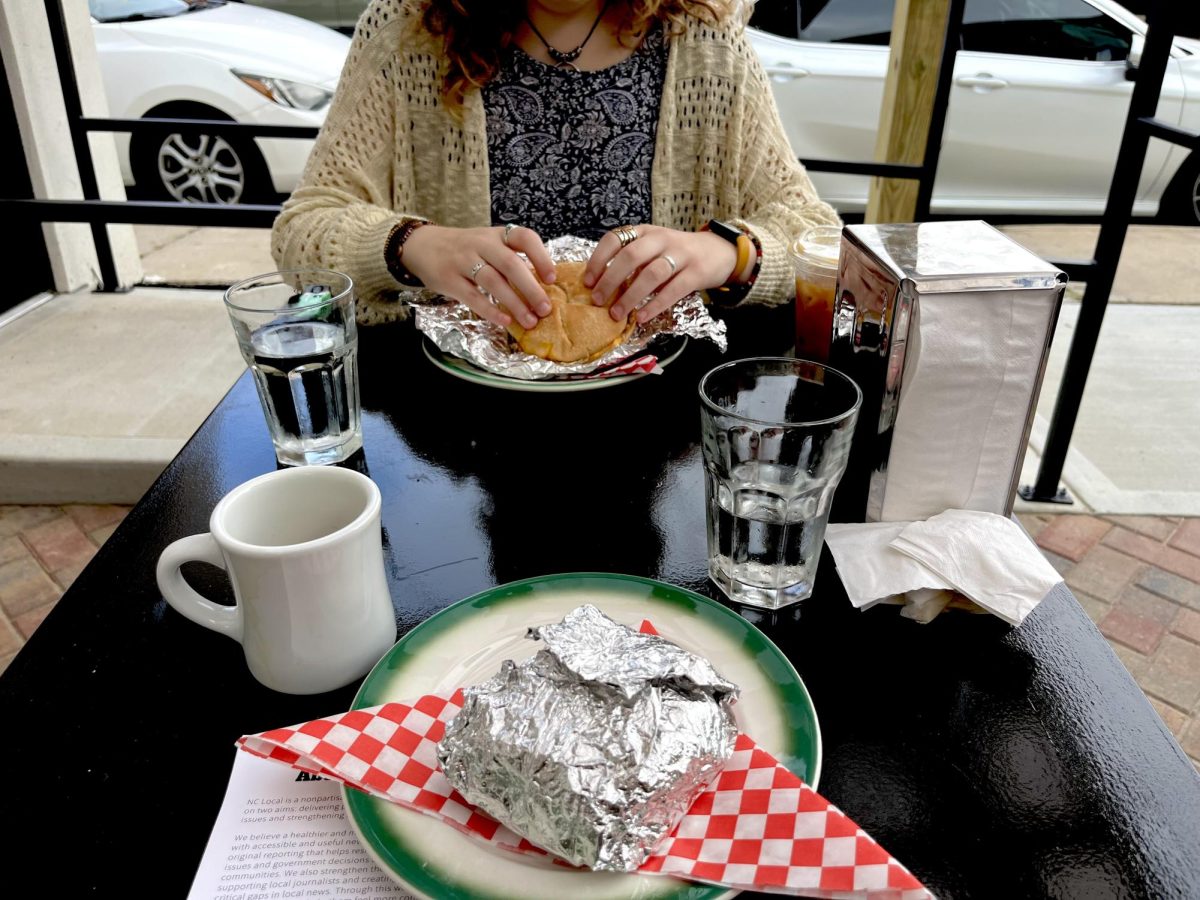With only 46 of the approximate 120 North Carolina animal shelters having a no-kill policy, animals in crisis are not guaranteed survival, especially during natural disasters like Hurricane Helene.
Due to the lack of no-kill policies within these shelters, Brooke Fornea, director of strategic development at Brother Wolf Animal Shelter, said she was concerned with the euthanasia rates within North Carolina shelters.
The shelter system prior to Helene was already overburdened, but North Carolina is already the third-highest state for space-based euthanasia,” Fornea said. “If you look at land mass, we’re only behind California and Texas, and North Carolina is a much smaller space. It shows that there are a lot of animals that are losing their lives.”
Shelters like Brother Wolf are well known for their efforts in being a no-kill animal shelter since they were founded in 2007. They made efforts beyond a simple animal shelter and succeeded in a mobile spay-and-neuter clinic. This was a significant asset for themselves and the Asheville community as the area continues struggling with strays and shelter overcrowding.
The mobile spay-and-neuter clinic was only one of the physical losses they suffered due to Hurricane Helene.
“[Within] this region, even though there are incredible places like this and ASPCA that do spay and neuter, they are only covering about 11% of the need,” Fornea explained. “We were also always overbooked, so losing that piece that really serves the community and serves the overpopulation of animals entering the shelter system was really hard.”

(Brother Wolf Animal Shelter)
The entire Brother Wolf facility was and remains inoperable today due to the damage caused by Hurricane Helene.
“That Saturday you still couldn’t get to the shelter, and having no cell phone service, we were really worried about our staff and volunteers and fosters,” Fornea said. “It was still like 26 feet of water, and with only the roof line peeking out, [we realized] we don’t have a building anymore.”
Fornea said that on the bright side, there were no animals left in the shelter amid the hurricane.
Before Helene made direct contact with the Asheville area, Fornea said the shelter’s staff and community came together to evacuate the entire building the night before within two hours, leaving no animals behind. This resulted in approximately 150 animals, including 50 in foster homes in the area, being saved and sent to northern shelter partners. Within two weeks of the disaster, all 150 transported animals had been adopted into their forever homes.
Although there were quite a few losses, Fornea said the community came together in the aftermath and made efforts to spread resources as far as they could with their Stay Together program.
She said the program was put in place through the aftermath of Hurricane Helene to provide support for those struggling in the area, especially with the lack of water and possible shortage of animal food. It also covered transportation for vet visits and payments with donations received. These efforts began the Sunday after Helene hit, and Fornea said they weren’t planning on stopping anytime soon as long as funding is available.
“The overwhelming amount of love we’ve received from our community members benefiting from that program is the next level of serving your community,” Fornea said. “People who have really been going through the hardest times ever in their lives and trying to keep things going, and they’re having to face potentially surrendering their animal who will immediately be euthanized because of a medical condition, but we can fix it by paying their medical bill.”
Brother Wolf shifted into a foster-based program as they worked to rebuild their facility. They emphasized the importance of this program as they slowly got back on their feet. With about 60 successful adoptions as of March 2025, Fornea said that they look forward to the future and have plans to launch a capital campaign to fund their building process and try to keep as many animals as safe as possible.
With this new facility, Brother Wolf expects to put plans in place for disaster prevention that they can also provide to other shelters because of their effectiveness in the Helene disaster. Fornea said everyone was as prepared as possible regarding the evacuation and would like to make that available for emergency shelters.
Due to this experience, Brother Wolf highlighted the importance of building a facility that can be a safe haven for other shelters in the face of possible natural disasters. The future prospects of their shelter include generators, solar power, and access to well water — all to be self-sufficient and as successful as possible in the face of unpredictable setbacks like Helene.
Although there is no set date for their capital campaign, most animal shelters need funding from donations or grants to stay afloat. Fornea said the rebuilding process will be extensive but will ultimately result in a community brought together under the same goal of keeping animals a little safer within North Carolina’s borders.
* * *
Esther’s Neonatal Kitten Alliance is a smaller shelter in Arden run by a small group of individuals, including founder and owner Andee Bingham. The shelter focuses predominantly on newborn kittens and their mothers and was founded in 2019 through Bingham’s experience in animal rescue.
“I had been working in rescue for about a decade before I started the organization, and what I was finding over and over was that there was a huge problem with newborn kittens. They would come into a shelter, and everyone would have to stop what they were doing and start trying to care for them,” Bingham said. “They require specialized care, and often they were sent to foster homes with very little training, which didn’t set the foster or the kittens up for success. When starting my own organization, I wanted to fill that gap.”
According to Bingham, many shelters are unable to take in newborn kittens due to their medical needs and the resources required to care for them. She said she created Esther’s Neonatal Kitten Alliance because of this need and the organization’s namesake, Esther.
Esther was a 2-week-old kitten found in a field by Bingham and cared for by her and those around her. Esther was eventually diagnosed with a neurological condition known as cerebellar hypoplasia, which resulted in her often being off balance and walking sideways and backward. She was very well-loved within the family and was described as “perfect.” However, before she was officially made a permanent member of their family, she sadly passed away due to a different illness.
This heartbreak of Esther’s passing allowed them to dream up an idea for a facility whose sole purpose was to help kittens like Esther get back on their feet, no matter how wobbly, and live out their lives alongside a loving family.

“We could think of no one better than Esther to memorialize and guide our work. She was fierce but soft,” Bingham said. “Her life was filled with love and compassion, and when her caretakers were challenged, they had support.”
This love and care continued through Helene’s horrors.
Bingham said that while the shelter did OK financially due to the donations and funding from all over the nation, the main issues were the power outages and water shortages. After approximately five days without power, they received a donated generator, so they were able to turn on their incubators.
“We had several critical kittens in care at the time of the hurricane, which was really challenging because those were kittens that desperately needed an incubator to keep warm,” Bingham stated.
The initial aftermath was particularly difficult for Bingham, as the facility is run partially out of her home, allowing her to be present with the animals. However, the lack of phone service and downed roads made it impossible for her two other staff members to make it to the organization. This led to Bingham taking sole care of about 30 animals on her own for the first four days after Helene hit without power or running water.
“That was a huge stress to try and keep him alive during that,” Bingham said as she explained a particular situation where she tube-fed a 2-week-old kitten with a cleft palate in the dark with lukewarm formula day after day in the initial aftermath.
With their usual 24-hour emergency line down, Bingham also had to find a separate way out of her neighborhood and made three to four round trips every day to get cell service to contact fosters who had no access to veterinary care or other resources in the aftermath of the hurricane.
“The first three to five days were extra hard because I would go up there first thing in the morning at like 6 and spend an hour trying to put out calls on social media about what we needed and what we were able to help with,” Bingham said. “For me, I think, the lack of being able to communicate was the hardest part because there were so many people that needed our help and so many people who wanted to help us.”
A large concern was the well-being of the fosters, as there was no way to know whether the foster kittens or the fosters themselves had a roof over their heads. This concern extended to their volunteers as well as others throughout the community.
It took them approximately two weeks to acquire cell service, and these daily trips could finally end.
Due to the shelter’s nature, losses are often attributed to medical diagnosis. Given the vulnerability of the animals that come into this shelter, these losses are to be expected in some ways. However, Bingham thought back on a particular kitten throughout Helene and couldn’t help but wonder, “What if?”
“The kitten was probably a seven- or eight-week-old kitten but was obviously very, very ill. The kitten was severely emaciated, clearly very anemic, and was in really bad shape,” she explained. “This was about 24 hours before we got the generator, so the incubators weren’t working.”
They placed the kitten in an unheated incubator. They packed it with hand warmers and blankets to try to raise its body temperature, as well as attempted to give it fluids to help with dehydration, but sadly, the kitten ultimately passed away.
“I don’t know that that kitten would have survived anyway because he was in very bad shape, but the situation definitely did not set him up for success,” Bingham said. “Again, I don’t know if he would have lived anyway, but he definitely would have had better chances if we had access to the stuff we would normally have access to.”
Through the disasters and losses of Hurricane Helene, the true buffer for Brother Wolf Animal Shelter and Esther’s Neonatal Kitten Alliance were the donations that helped support them, as well as the fosters and adoptions that took place both before and after Helene. These caretakers often put their lives on hold to help these animals as much as possible.
Animal Foster Parent Molly Haines said she fostered cats numerous times for the Asheville Humane Society and Esther’s Neonatal Kitten Alliance.
“The biggest thing to know when fostering is most of the time, these cats and kittens need humane attention and love and time to truly get better,” Haines said. “Often, some medications or treatments or feedings have to happen multiple times a day, and I rearrange my personal schedule to account for treatments before work and before bedtime.”
Haines said she and her mother often foster together.
“We had actually just dropped off a foster we had on the Wednesday before Helene and I dropped off a donation of cat food to Esther’s on Friday before the storm was really bad,” Haines said. “We were on hold with Esther’s and even Brother Wolf to pick up fosters during the storm, but they all found homes before we got there.”
The community came together during the disaster to help those most vulnerable within their community: animals. With countless losses faced by both these shelters and those throughout the Asheville area, the funds and support they received nationwide did not go unnoticed. They saved countless animals’ lives from medical issues and possible space-based euthanasia.
Donations and funding will continue to help these organizations rebuild from Helene, whether from the ground, like Brother Wolf, or continuous growth, like Esther’s Neonatal Kitten Alliance. Adoption and foster care are also ways to help shelters like these support the community and the animals that live within it.
“I highly encourage anyone who loves animals to foster. It’s a great way to give back to the community,” Haines said. “Plus, you get to have a tiny, adorable kitten to cuddle and love on and help get better. It truly makes me feel so good to be able to help in this way.”

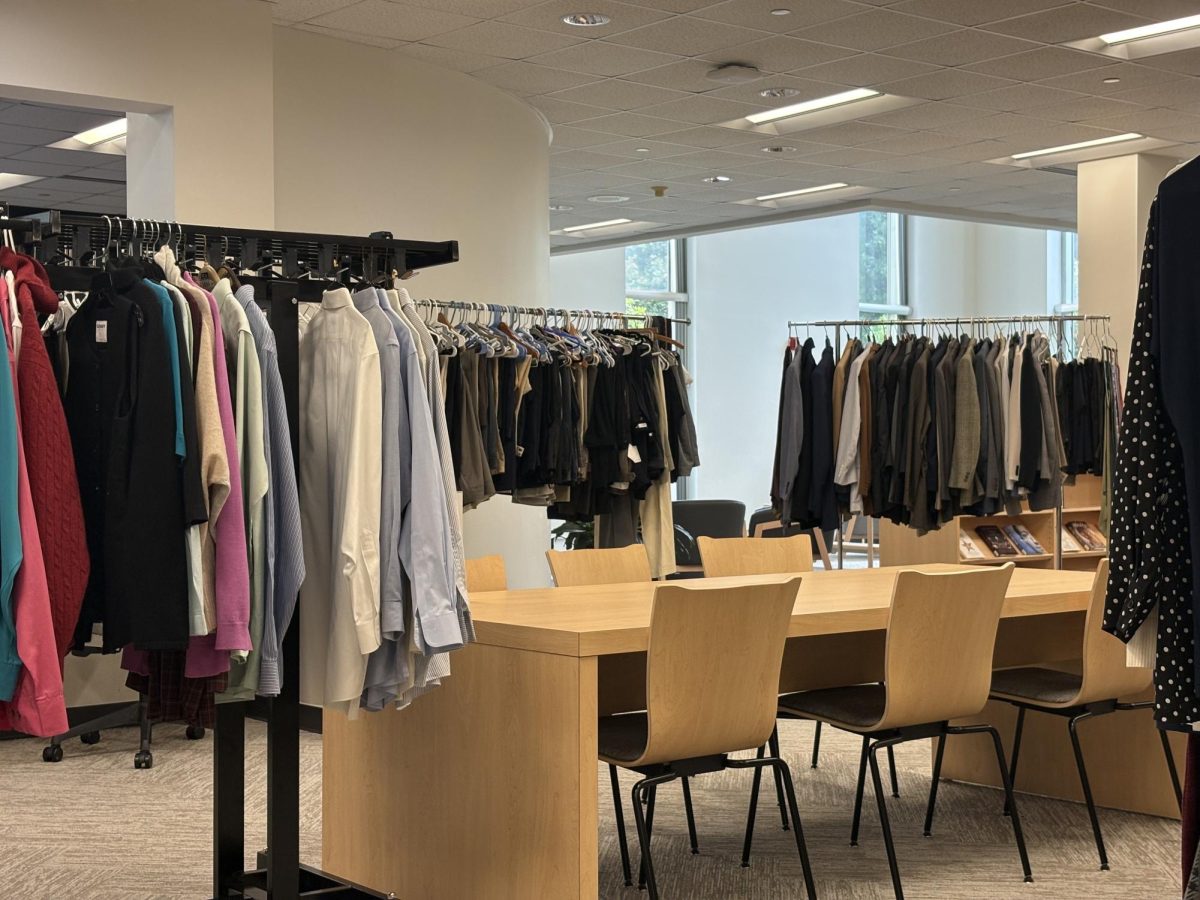
![Brooke Pedersen [second from the right] and Luis Reyes [right] hold banners during the Wrap The Woods event.](https://thebluebanner.net/wp-content/uploads/2025/09/ELIZABETH_PRITCHITT_IMG_3470-1200x804.jpg)
